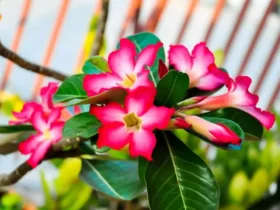In the realm of flowering bulbs, few varieties can rival the captivating beauty and intricate charm of the Parrot Tulip (‘Flaming Parrot’, Papegoya tulpan (Tulipa gesneriana)). With its flamboyant petals, vibrant colors, and unique texture, the Parrot Tulip stands as a true masterpiece in the world of horticulture. In this article, we embark on a journey into the enchanting realm of the Parrot Tulip, exploring its appearance, characteristics, history, and the joy it brings to gardens and floral arrangements.
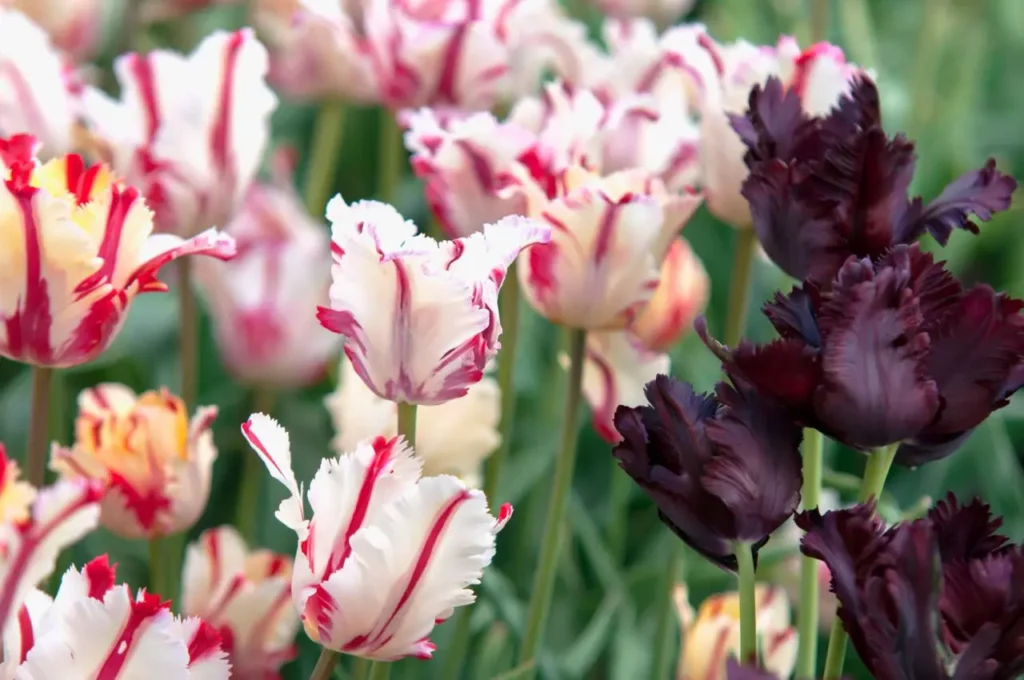
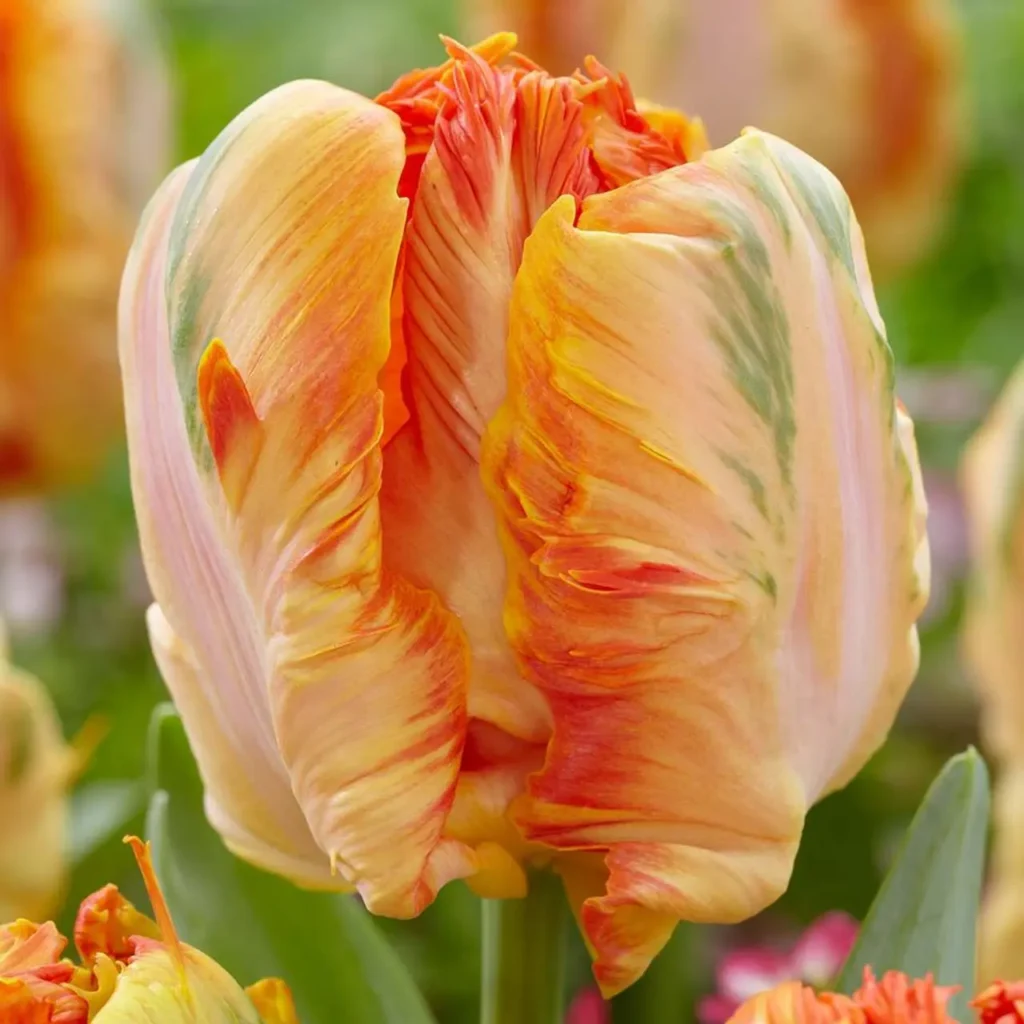
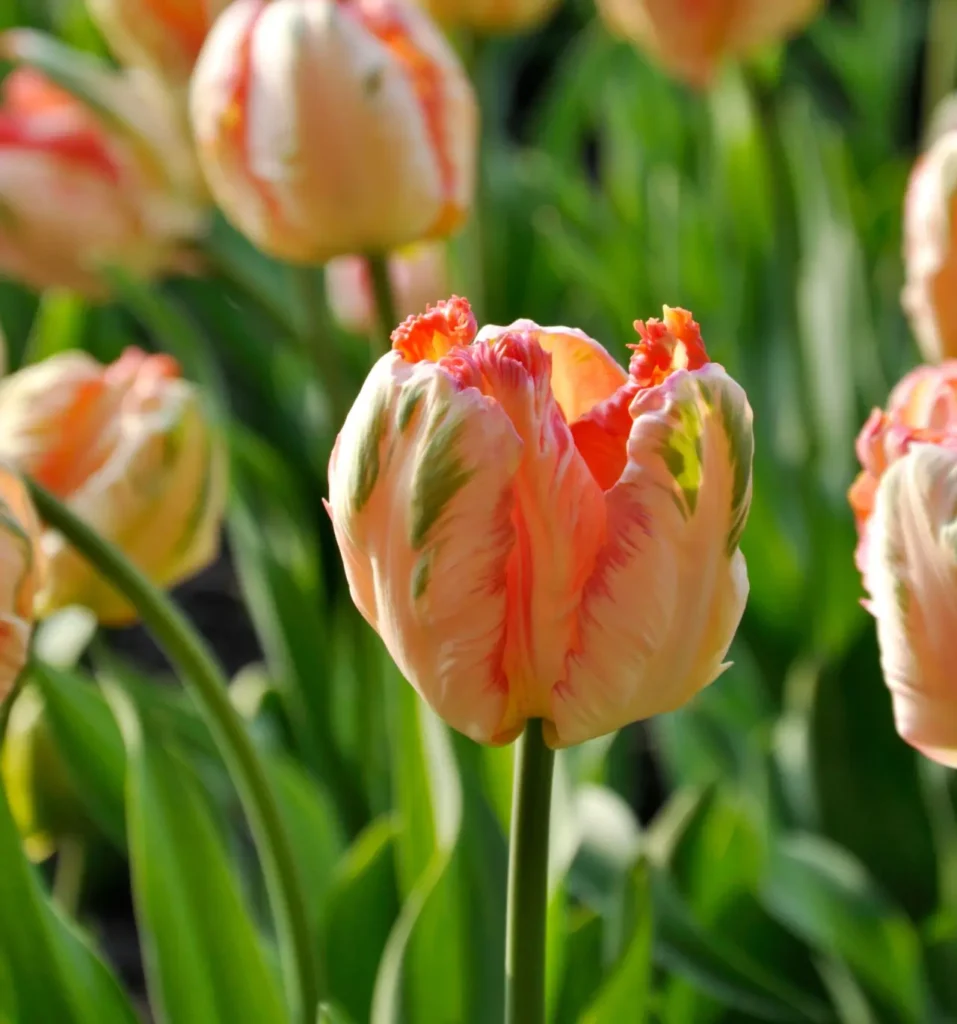
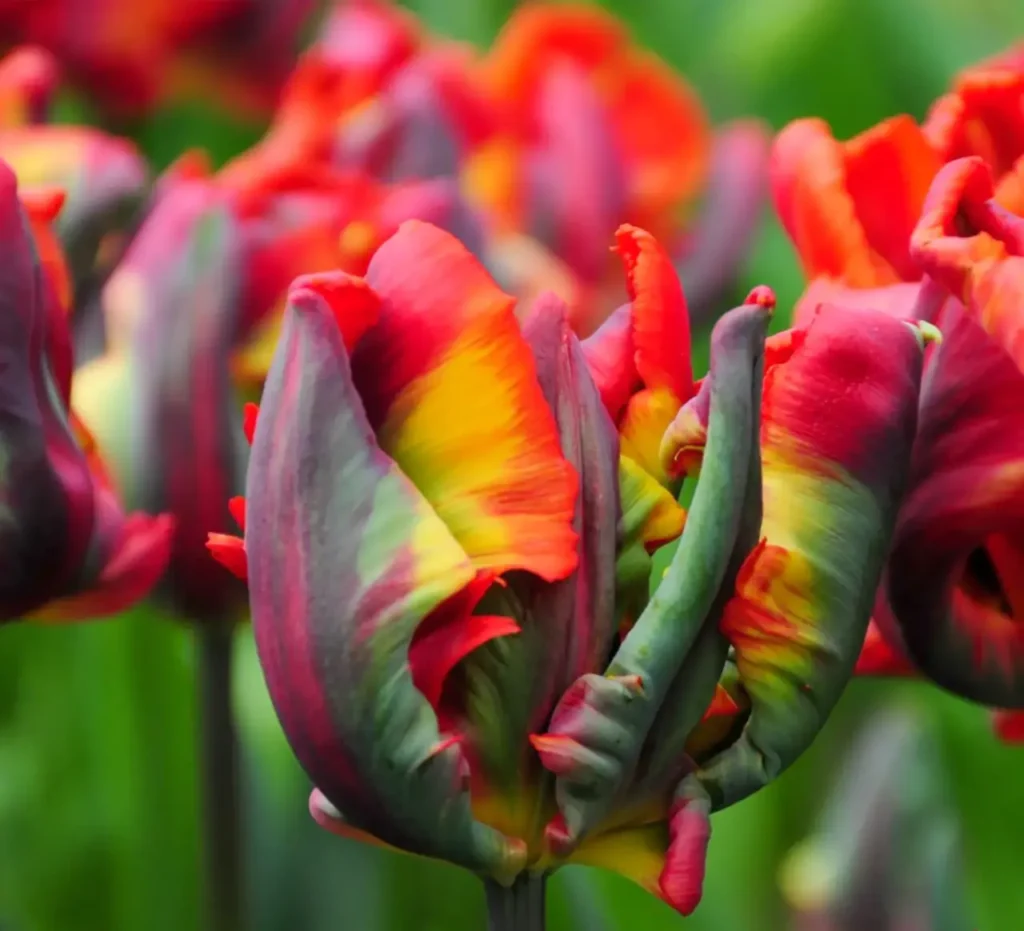
Appearance and Characteristics
The Parrot Tulip, known scientifically as Tulipa gesneriana var. viridiflora, is celebrated for its dramatic and exotic appearance. Its petals are notably fringed, ruffled, and often feature irregular, serrated edges that resemble the plumage of a parrot, lending the flower its charming name. The texture and unique form of the petals create a visual spectacle that is truly unlike any other.
The color palette of Parrot Tulips is equally captivating, spanning a range of shades including brilliant reds, vibrant yellows, oranges, purples, and even bicolor combinations. The combination of textured petals and vivid hues gives the Parrot Tulip an irresistible allure that makes it a sought-after choice for gardeners and florists alike.
The color of the Parrot Tulip
Parrot tulips are a unique and striking variety of tulips known for their flamboyant and vibrant colors, as well as their fringed and feather-like petals. The colors of parrot tulips can be quite diverse and intense, often featuring multiple shades and patterns. Some common colors of parrot tulips include:
- Red: Parrot tulips can come in shades ranging from deep scarlet to bright crimson.
- Orange: Vibrant orange hues are also common, resembling the bold colors of a parrot’s plumage.
- Yellow: Shades of sunny yellow can be found in many parrot tulip varieties.
- Pink: Soft pastel pinks or more vivid magenta tones are also popular choices.
- Purple: Parrot tulips can feature shades of purple ranging from lavender to deep violet.
- Bi-color: Many parrot tulips are bi-colored, with combinations like red and yellow, or pink and white.
- Striped: Some varieties have striking stripes or streaks of color on their petals.
- Variegated: These tulips may have petals with contrasting colors or unique patterns.
- Green: A rare but captivating color, some parrot tulips have green accents or hints on their petals.
Additionally, Parrot tulips amalgamate diverse hues to form an exceptionally captivating and distinctive shade. Renowned for their theatrical and exotic aspect, their petals are frequently contorted, fringed, or feathery, mirroring the feathers of a parrot. Their extensive spectrum of colors and distinct petal structures render them a sought-after selection for infusing gardens and floral displays with vibrancy and fascination. The precise color of a parrot tulip can fluctuate, contingent on the distinct variety and prevailing cultivation circumstances.
History and Origin
The history of Parrot Tulips traces back to the 18th century, with their origins believed to be in the Middle East. Over time, they captured the imagination of tulip enthusiasts and breeders, leading to the cultivation of various cultivars that showcase a diverse array of colors and petal shapes. The unique appearance of Parrot Tulips made them highly prized during the “tulipomania” period, when tulips became the focus of a speculative craze in the Netherlands.
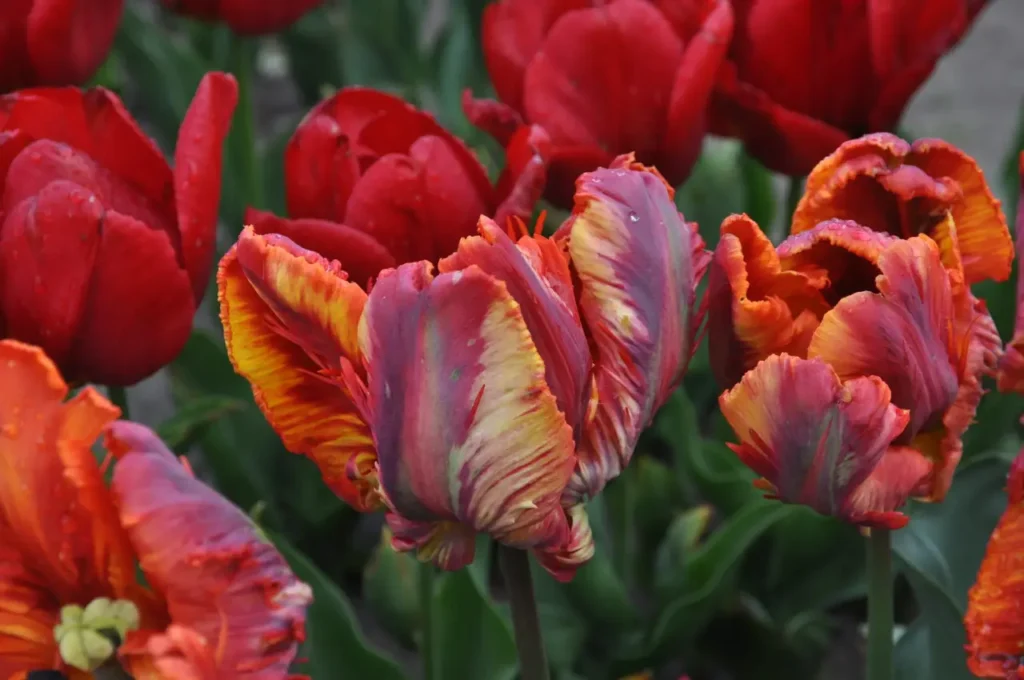
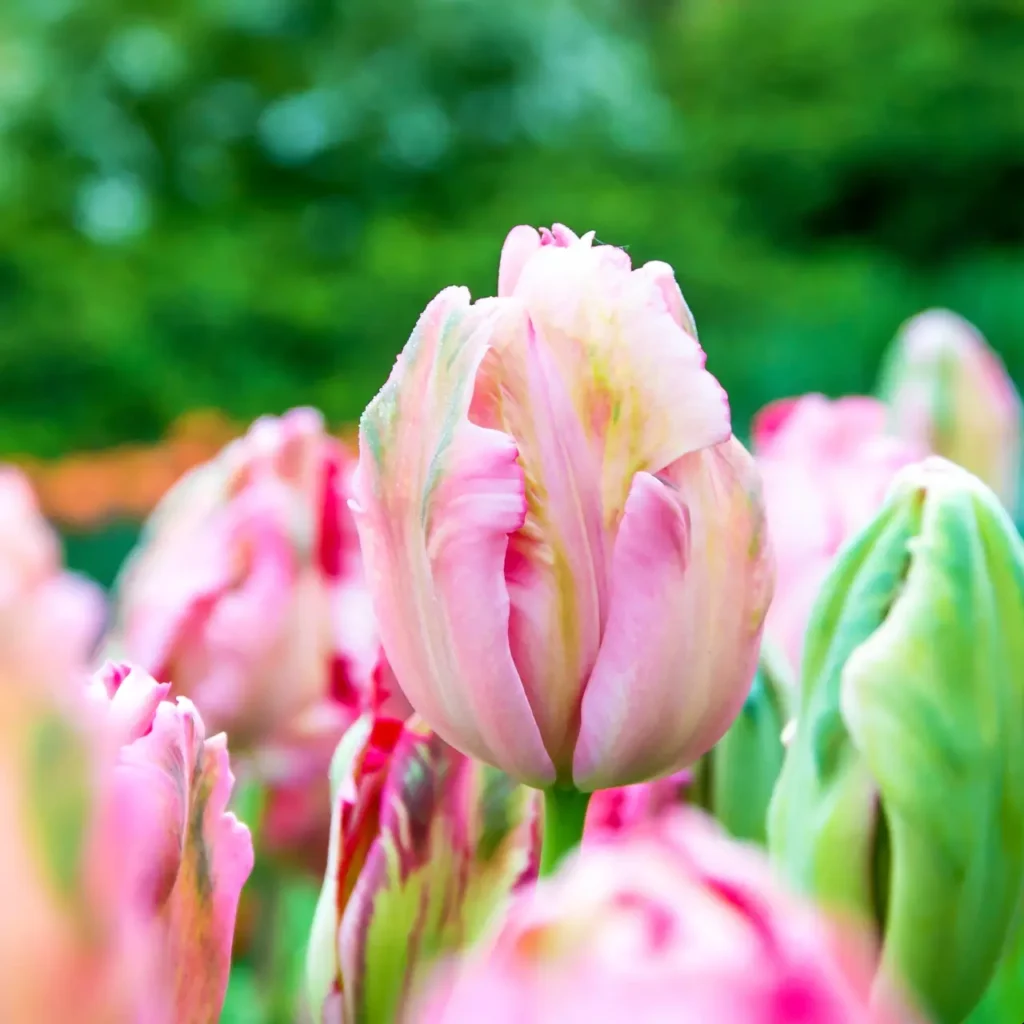

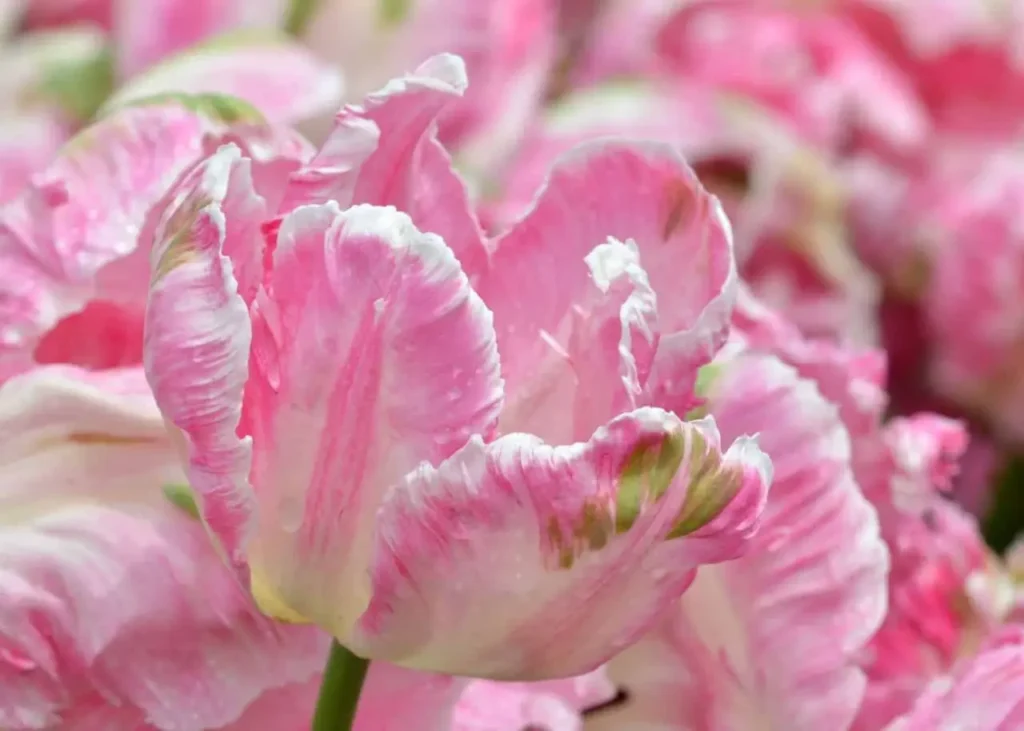
Garden Cultivation and Care
Cultivating Parrot Tulips can be a rewarding endeavor for both experienced gardeners and novices. Here are some general care tips:
- Planting: Plant Parrot Tulip bulbs in the fall, ideally a few weeks before the ground freezes. Choose a location with well-draining soil and plenty of sunlight.
- Spacing: Space the bulbs at a distance of around 4-6 inches apart, ensuring they have room to grow and thrive.
- Watering: While Parrot Tulips appreciate regular watering, be cautious of overwatering, which can lead to bulb rot. Allow the soil to dry out slightly between waterings.
- Fertilizing: Apply a balanced fertilizer when planting and again as the shoots emerge in spring.
- Deadheading: Remove faded flowers to encourage energy to go into bulb growth rather than seed production.
- Winter Care: In colder climates, apply a layer of mulch over the bulbs to protect them from extreme cold.
Floral Arrangements and Elegance
Beyond gardens, Parrot Tulips bring their vibrant and textured beauty to floral arrangements. Their unique appearance adds depth and drama to bouquets, centerpieces, and other displays. When combined with other spring blooms, they create a captivating tapestry of colors and textures that captures the essence of the season.
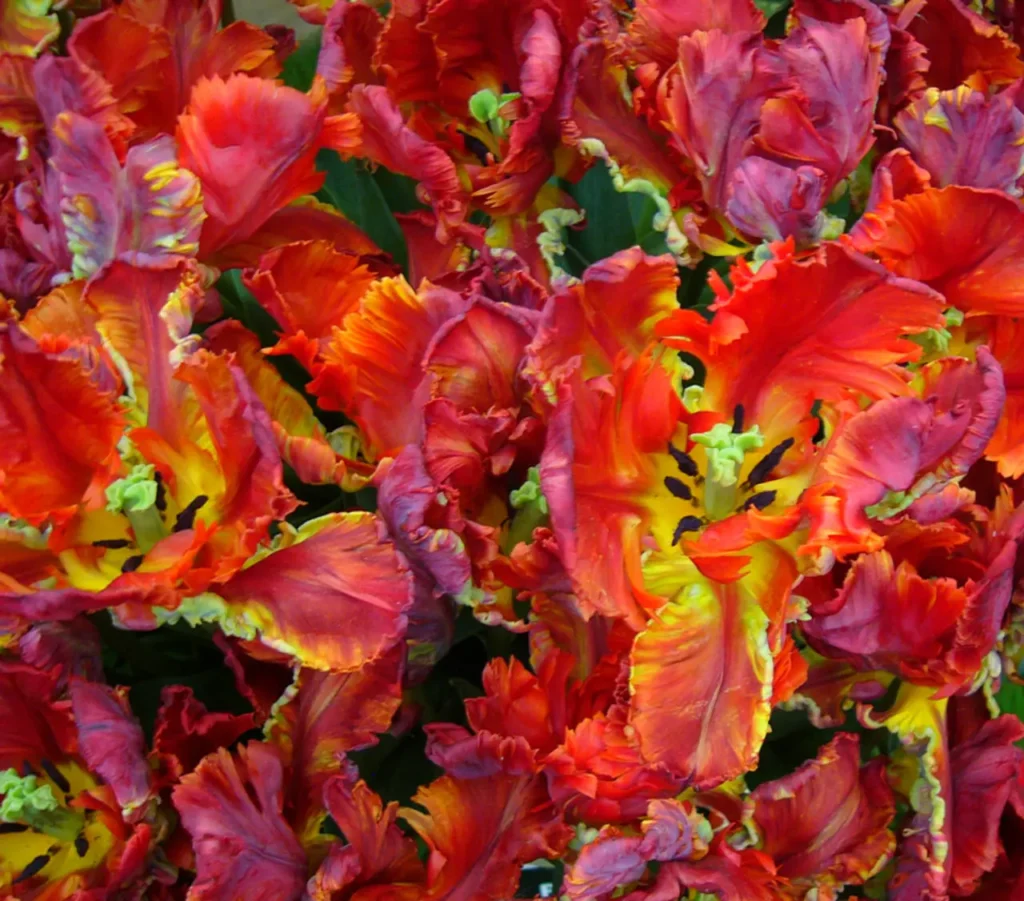
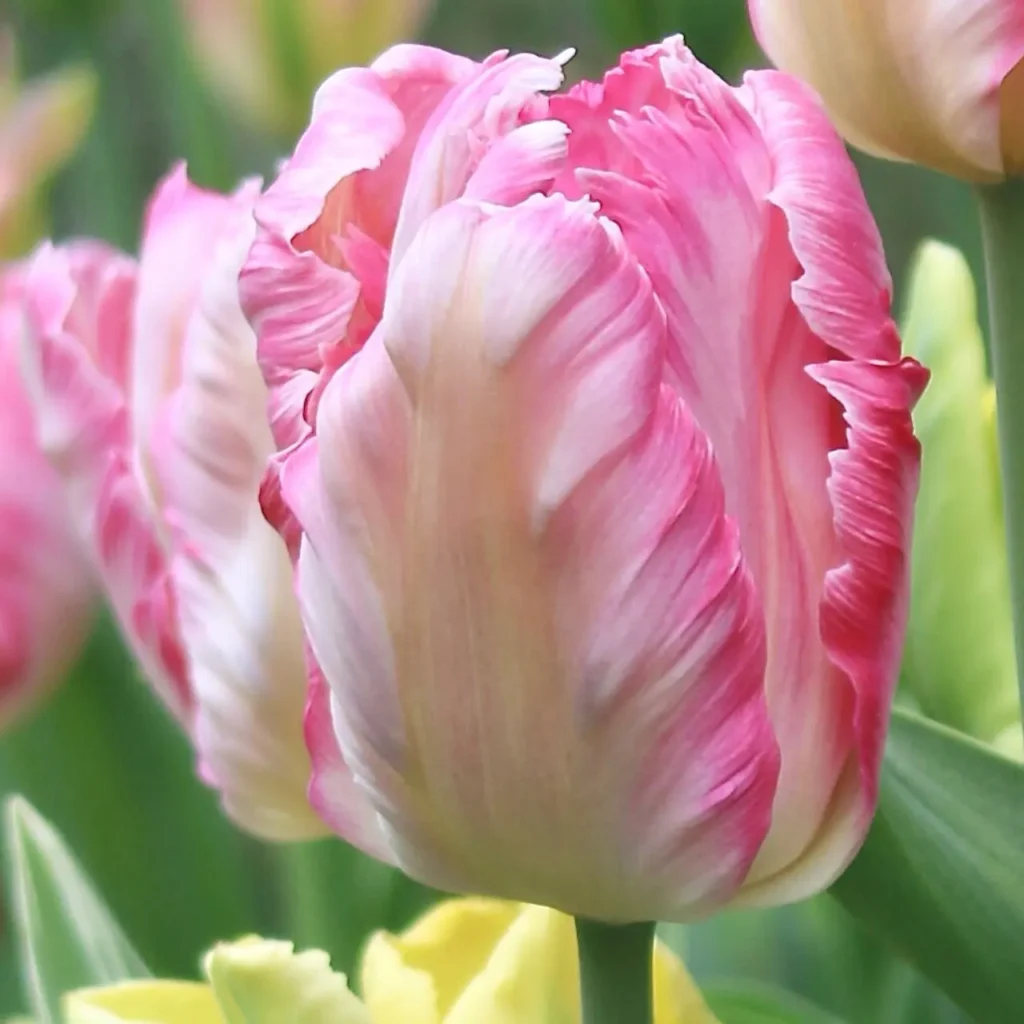
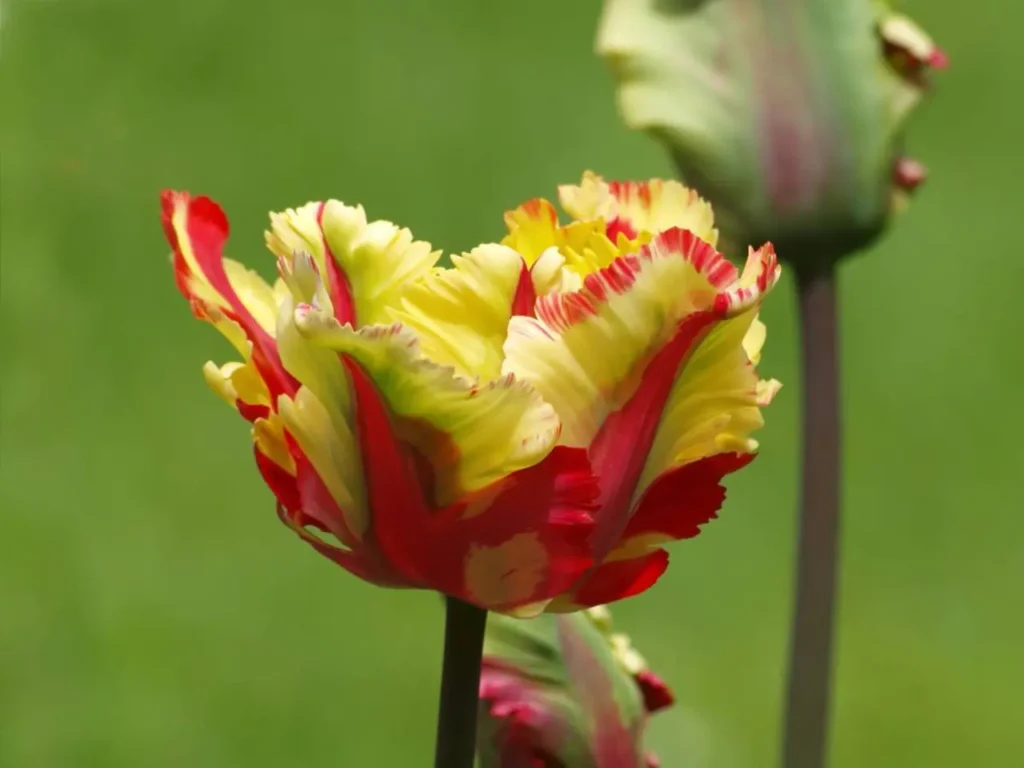
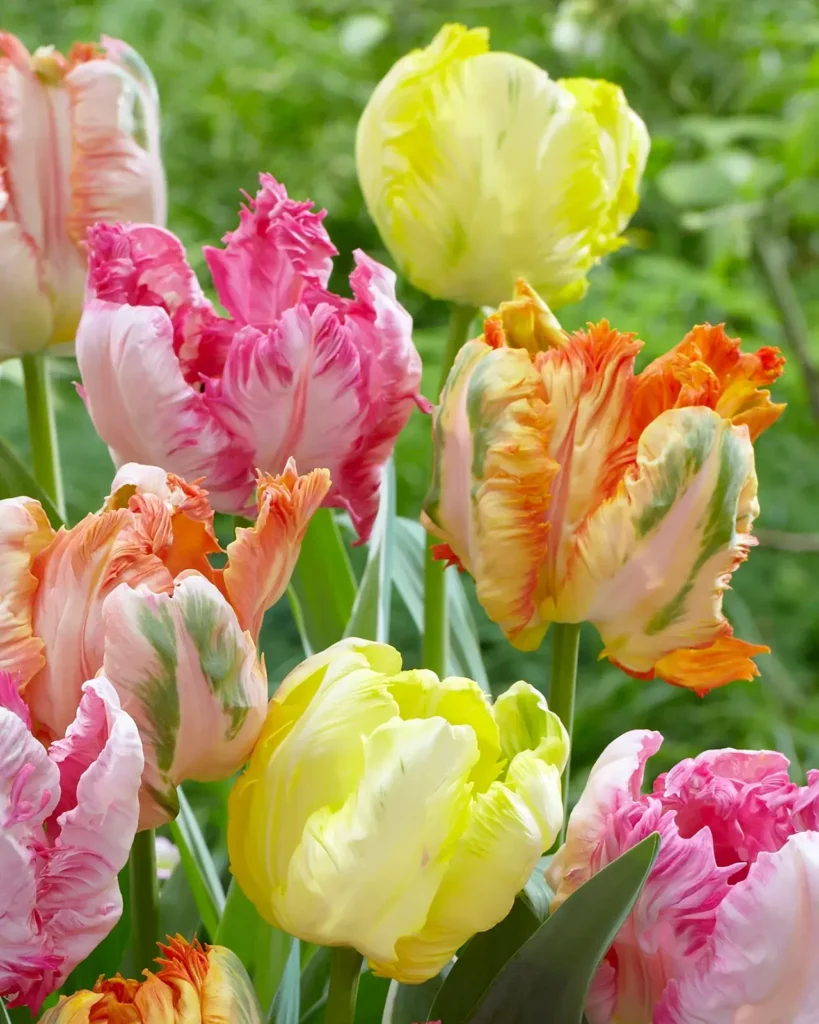
The Parrot Tulip is a true testament to the artistry of nature, offering a kaleidoscope of colors and a texture that evokes the graceful movement of parrot feathers. Its history, unique appearance, and versatility make it a prized addition to gardens and floral arrangements alike. By embracing the enchanting allure of the Parrot Tulip, we connect with the rich tapestry of botanical diversity and celebrate the ever-evolving beauty that nature bestows upon us.
